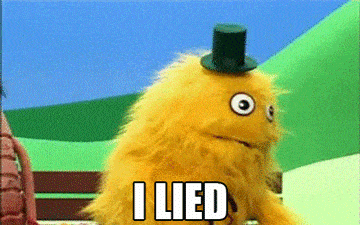Being able to spot a lie can keep you from falling prey to cons and scams. People lie for many reasons. Sometimes, they wish to avoid speaking the truth to take advantage of you, and other times they see dishonesty as a means for survival.
Unfortunately, most of us aren’t very good at detecting lies. Research shows that without training, most people have odds slightly better than chance when it comes to spotting a lie.[1] To put it another way, you may as well flip a coin to determine if someone is swindling you.
Luckily, there are a few simple things you can do to determine whether or not a person is lying. By using the power of observation, you can become a human polygraph test and identify a fibber right away.
Below are a few techniques that can help you avoid being a victim of deceit.
Liars are less likely to smile at you
When you see someone smiling too much, you may get the sense that they are being disingenuous. Some seasoned liars, have taken the opposite approach in an attempt to foil their audience. According to Paul Ekman, liars, especially men, don’t smile as much as they would when they are telling the truth.[2]
When a con artist does smile at you, it may be a fake smile. False smiles are easy to spot because the individual controls the shape of their mouth, but they aren’t able to smile with their eyes.[3]
Look at their feet to see if they’re grounded in the truth
Foot movement can offer clues about a person’s trustworthiness. When people lie, they tend to restrict the movement of their feet.[4] This may give the liar a stiff appearance.
When a person is lying, they orient their feet toward the exit. A subconscious discomfort with dishonesty causes their feet to seek an escape. Since our feet are so far from our brains, we don’t always notice that our feet reveal our innermost feelings.[5]
Look for quick changes in facial expression to understand how someone truly feels
Your face reflects your thoughts and feelings. When someone lies, their expressions may flicker between the facade that they want you to see and their true feelings. These micro-expressions, which may last for only 1/25 of a second, are subtle indicators that a person is masking their intentions.
The person who says “honestly” repeatedly is worried that you think they aren’t telling the truth
Liars may exhibit verbal tics whenever they feel the need to reinforce their trustworthiness. Over-using phrases like “to be honest”, “believe me”, and “to tell the truth” are clear indications that person is insecure about their believability. Using these phrases once in a while is okay, but if someone’s speech is peppered with such reinforcers, they’re hiding something.
Liars lick their lips because they are stressed
Lip-licking is a nervous habit that can betray a lack of confidence, but it can also show you that someone is lying. When we are under stress, we may unconsciously resort to repetitive physical behaviors, such as lip-licking, to relieve our jittery feelings.
If the person won’t look at you or maintains eye contact for too long, they may be worried that you’ll catch them in a lie
If eyes are mirrors to the soul, then dishonest people tend to be nervous about what their eyes reveal. A misleading person may avoid eye contact all together, or they may try to maintain eye contact for an extended period to attempt to prove their trustworthiness.[6] When eye contact seems forced or nonexistent, look out!
Long pauses indicate that the person is working to make up a story
Generating a believable story out of thin air takes time and talent. When someone is telling a tall tale, they may pause frequently to create a sequence of events. The person may also have to work out the logical progression of a story as they go, which means that they’ll have to stop and think.
You’ll only see this pause if you catch the liar off guard. If they have time to prepare a statement or story, they will work out the bugs well before they tell it. They may do such a convincing job that they believe their own lies.
Sweating profusely can signal that a person is stressed about lying
If you’ve watched an interrogation on a popular detective show then you might have noticed that the person being questioned often sweats profusely. That sheen across the liar’s face, neck, and palms is the body’s response to the stress of lying.[7]
Liars fidget excessively
A person who is lying usually has to do something with their hands. Liars tend to adjust their clothing frequently, touch their noses, fidget with their hair, and squirm in their seats. Lying is uncomfortable business for many people, and their mental discomfort can lead them to addressing minor physical annoyances with greater frequency.
Dishonest people have trouble fabricating a story with good posture. They may shift their weight or fuss and readjust for no obvious reason.
Understand how a person usually acts so that you can tell when something is off
It’s easy to catch someone you know in a lie because you have an understanding of how they normally act. You’ll have a mental image of their baseline, which you can use to determine when they are acting strangely.
You can still establish a baseline even if you don’t know someone. Ask the person simple questions for which you already know the answers. They should be able to answer without lying, which can reveal how a person behaves when they are telling the truth.
This is why when someone takes a polygraph (lie-detector) test, the initial questions are all based on basic information such as name and date of birth.[8] These establish the baseline to which other answers will be compared during the final analysis.
When the story doesn’t add up, you might be dealing with a liar
Even if you have the slightest doubt that the other person is taking you for a ride, ask him to repeat the story after discussing a couple of things in between. Of course, if a person’s response seems canned, then they may have rehearsed this tale several times before telling it.
Liars tend to add or remove details from the original telling. Major deviations and logical leaps are red flags that a person is lying to you.
Changes in speech reveal a dishonest person
Stammering, stuttering, and speech that is either faster or slower than normal often indicate that a lie is in process. In this case, you can actually hear the person struggling to take their lie from their brain and out into the world.
We’ve already seen that symptoms of stress and signs of lying go hand in hand. Rapid speech indicates that the person may be nervous about what they are saying because it isn’t true.
Use all the clues available to you to catch a liar
Determining whether or not someone is telling the truth can be tough, but if they exhibit several of these signs, the likelihood that they are being dishonest is high. Use context, your instincts, and these visible indicators of dishonesty to avoid being fooled.
Reference
| [1] | ^ | Quartz: Research shows how you can tell if someone is lying |
| [2] | ^ | West Side Toastmasters: The Allure of Laughter and Smiles |
| [3] | ^ | Business Insider: A neurologist explains how to spot a fake smile |
| [4] | ^ | The Telegraph: Our feet can talk, says study |
| [5] | ^ | Wonder How To: Mind Hacks: Look down to tell what others are really thinking |
| [6] | ^ | Psychology Today: How to detect a liar |
| [7] | ^ | North American Investigations: The physiology of lying |
| [8] | ^ | The Law Dictionary: Common questions asked during a lie detector test |















































